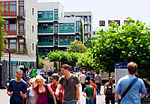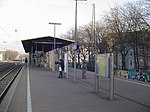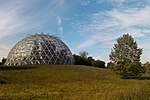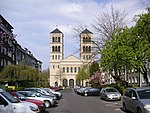Universitäts-Augenklinik Düsseldorf
AC with 0 elementsEye hospitalsHeinrich Heine University DüsseldorfMedical and health organisations based in North Rhine-WestphaliaTeaching hospitals in Germany
The Universitäts-Augenklinik Düsseldorf is the department of Ophthalmology of the University Hospital of Düsseldorf in Germany. It is an internationally renown centre for corneal transplantation, ocular surface disease and management of associated disorders ranging from Glaucoma to oculoplastic surgery. Further subspecialist expertise is established for the diagnosis and surgical and medical treatment of vitreoretinal and macular disorders as well as strabismus.
Excerpt from the Wikipedia article Universitäts-Augenklinik Düsseldorf (License: CC BY-SA 3.0, Authors).Universitäts-Augenklinik Düsseldorf
Moorenstraße, Dusseldorf Bilk (Stadtbezirk 3)
Geographical coordinates (GPS) Address Phone number Website Nearby Places Show on map
Geographical coordinates (GPS)
| Latitude | Longitude |
|---|---|
| N 51.197111111111 ° | E 6.7893888888889 ° |
Address
Universitätsklinikum Düsseldorf
Moorenstraße 5
40225 Dusseldorf, Bilk (Stadtbezirk 3)
North Rhine-Westphalia, Germany
Open on Google Maps










